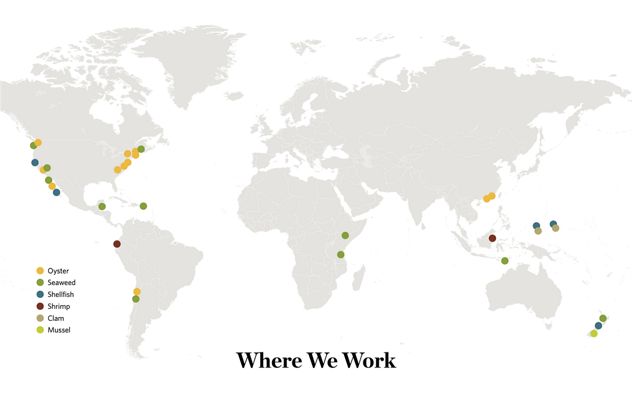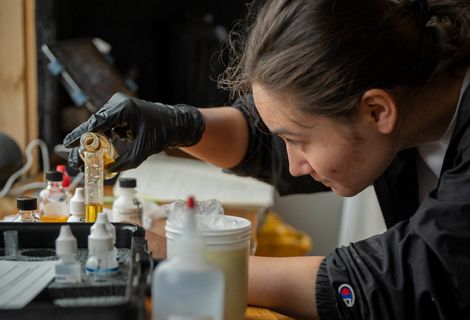Who We Are

Welcome to the Aquaculture Science Hub
As the global population grows and we face the dual crises of climate change and biodiversity loss, it’s more important than ever to produce food sustainably. We are working to provide the information, tools, and resources that farmers, industry, conservation practitioners, researchers, decision-makers, and other stakeholders need to support regenerative aquaculture around the world.
By the Numbers
Our mission is to ensure that aquaculture contributes to ecosystem restoration, food security, and thriving communities.
-
7.9
million hectares of water under improved management
-
1,635
farmers with increased economic opportunity
-
$75+
million mobilized towards sustainable aquaculture projects
-
15
countries with on-the-ground projects

This is a map of the world with colored dots accompanied by a legend showing the different types of aquaculture projects, including oyster, seaweed, shellfish, shrimp, clam, and mussel. In North America, there are oyster, shellfish, and seaweed projects. In South America, there are shrimp, oyster, and seaweed projects. In Africa, there are seaweed projects. In Southeast Asia, there are oyster, shrimp, seaweed, shellfish, and clam projects. Finally, in New Zealand, there are seaweed, shellfish, and mussel projects.
Our Approach
Science is at the core of everything we do. A strong foundation of rigorous, trustworthy research ensures that we can make the biggest positive difference for people and nature.
